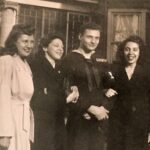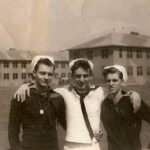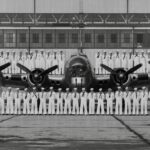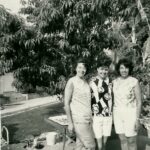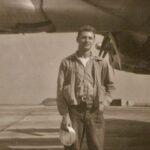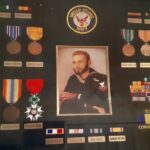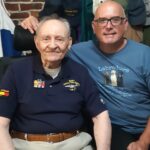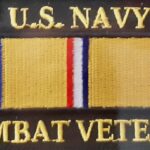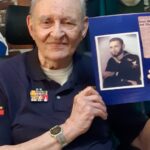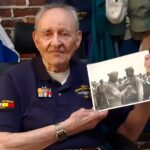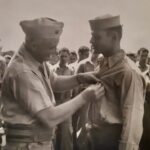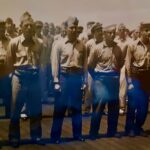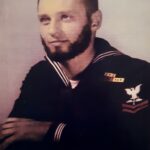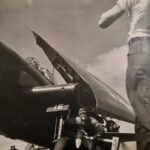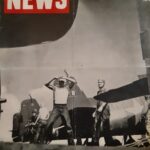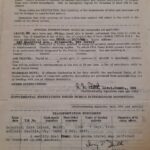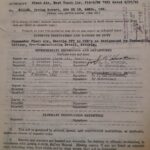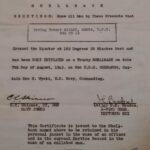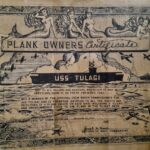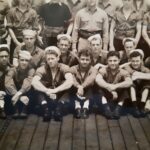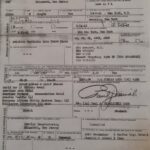Bob Miller was born December 7, 1923 in New York state. He grew up in Bellmore, Long Island, not too far from Jones Beach, an area that Bob remembers fondly. The Great Depression impacted Bob and his three older sisters, but the family managed to get by, with everybody pitching in. The family moved a few times, and Bob switched schools between Long Island and Brooklyn, all the while working a few jobs and pursuing a few hobbies, including the naval cadets. When he turned 18, Bob’s father urged him to join the navy, hoping it would set his mischievous son on the right path. Bob went into boot camp, and almost immediately got into trouble: briefly in the brig, he was assigned to the USS Wyoming, where he began to learn ship routine. After about six months he was transferred to the USS Raven, and there he learned the skills of seamanship as he served as helmsman and coxswain; it was also on this ship where Bob first encountered a U-boat early in 1941. Later that year the US would enter the war officially with Japan’s December 7 attack on Pearl Harbor, which happened to be Bob’s 18th birthday. With his growing expertise the navy assigned Bob a new role: he was sent onshore and designated for aviation training, for future duty on an aircraft carrier. Bob was at first on the Ranger, and later the Charger, where the men were trained on the various elements of flight deck duty. Then he boarded the USS Suwannee, another converted aircraft carrier, and they headed across the Atlantic to participate in Operation Torch, the Allied invasion of French West Africa. That was followed by a stint on the USS Chenango, and a return to the U.S. After much needed repairs Bob and the ship were bound for the Pacific. By this time Bob was a much sought after mechanic, and he began to take on additional responsibilities as a plane director on the deck of the carrier. Stationed now aboard the USS Tulagi the long trip back to the Atlantic began, as this carrier had been chosen to be part of Operation Dragoon, the 1944 invasion of southern France. They performed their duties well, receiving a presidential citation for their efforts. Just as quickly as they had made the transition to the Mediterranean, they were ordered back to the Pacific, where they joined in the fight to liberate the Philippines, and then the battle for Iwo Jima. It was at this point that Bob and the Tulagi experienced the desperation of the Japanese, as they came under kamikaze attack. They were fortunate that they did not sustain extreme damage, as they saw happen to so many other ships. Still the damage was enough that they were ordered back to the US for repairs as Okinawa and the final offensives of the Pacific War were getting underway. While back in the US, they learned of the atomic bombs and the end of the war. The crew of the Tulagi was sent in many directions: many stayed on the Tulagi and returned to the Philippines to retrieve American GIs, but Bob was transferred to the USS Chloris, a specialized repair ship. From there he had one final navy assignment ahead as he was transferred to the Hurricane Hunters, specially equipped B-17s and Constellations engaged in meteorological research. The navy floated the idea of officer school, but irregularities on Bob’s military record did not allow that, and he took his honorable discharge and returned to civilian life. Bob fell back into those rhythms easily enough, later marrying and raising a family and making his mark in postwar America. Bob Miller was interviewed by Scott Masters at his home in Millinocket, Maine in August 2022.
Videos
Click next video below to keep watching
- 1. Early Life on Long Island
- 2. School; Awareness of the War
- 3. The Naval Cadets and the Navy
- 4. Great Lakes College
- 5. The USS Raven
- 6. The U-Boat
- 7. Pearl Harbor; From Gunnery to Aviation Training
- 8. Bermuda to Operation Torch
- 9. The USS Chenango; Back to the US
- 10. To the Pacific
- 11. The Guadalcanal; The USS Tulagi
- 12. Operation Dragoon
- 13. The Flight Deck; Back to the Pacific
- 14. Iwo Jima; Kamikaze
- 15. Tokyo Rose and Okinawa
- 16. The USS Chloris and Hurricane Hunters
- 17. Sharing the Story; Remembrance
